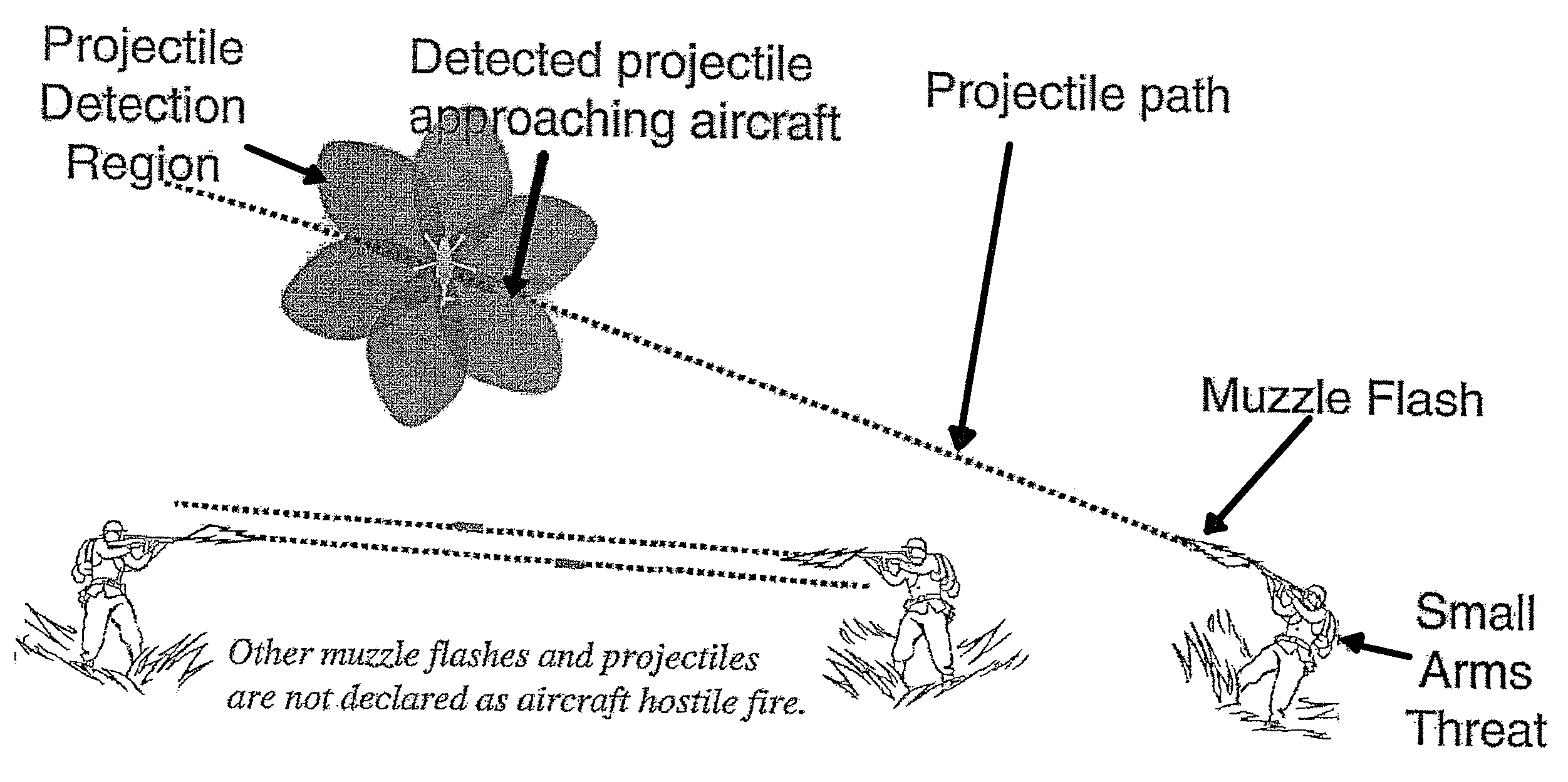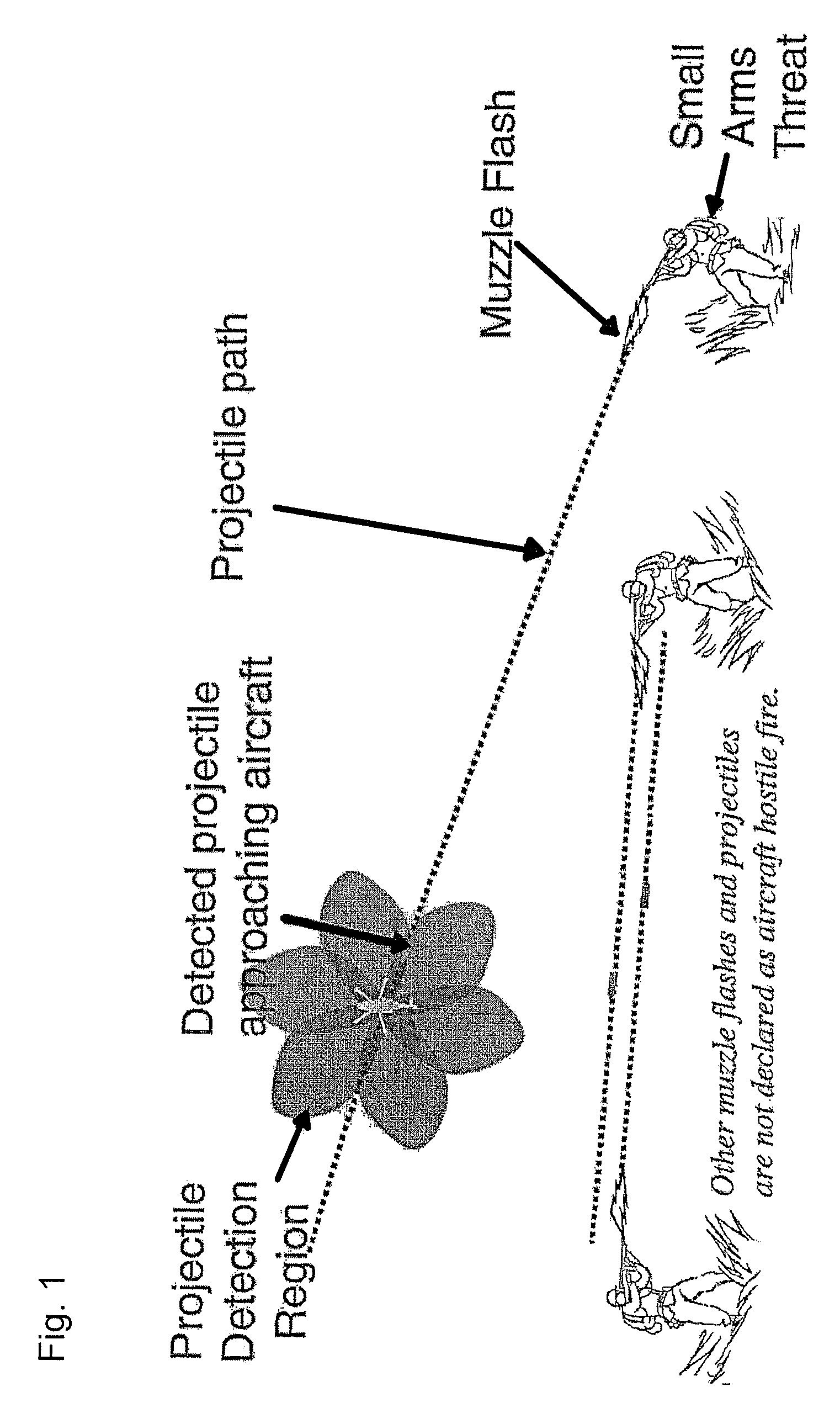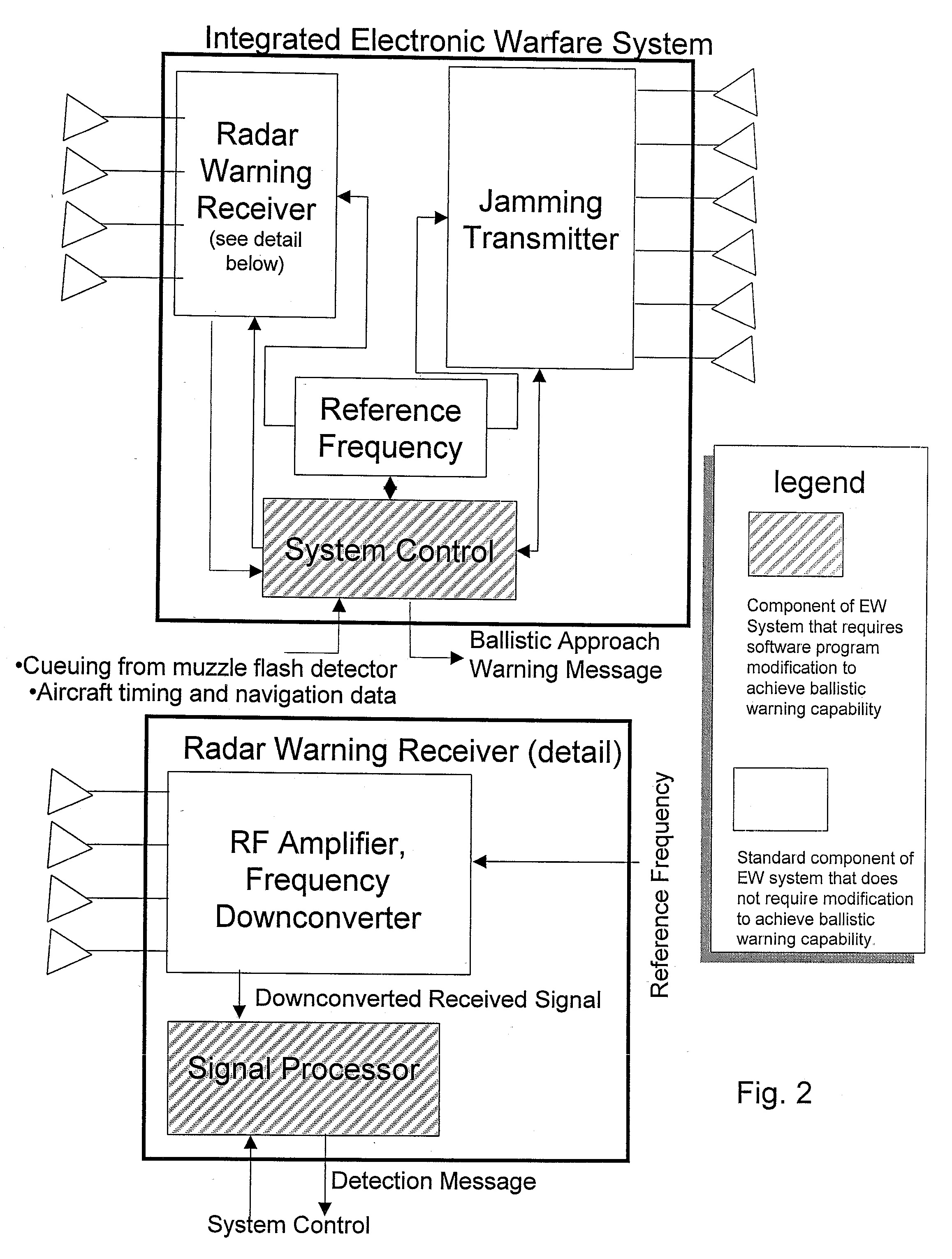Bullet approach warning system and method
a technology of approaching warning system and bullet, applied in the direction of communication jamming, instruments, measurement devices, etc., can solve the problems of missiles that miss the helicopter, weapons that pose a serious threat, and create targets within the rang
- Summary
- Abstract
- Description
- Claims
- Application Information
AI Technical Summary
Benefits of technology
Problems solved by technology
Method used
Image
Examples
Embodiment Construction
[0024]The system and method of the present invention uses existing EW equipment in a novel way to provide a BAW capability, that enhances the survivability of the helicopter and aircrew in hostile environments by detecting the presence of small arms weapon firings, determining whether the helicopter is the intended target of the bullet(s) from the detected small arms weapon firings and, where the helicopter is determined to be the intended target, providing a warning to the aircrew of the danger that enables the aircrew to take evasive actions, as necessary. As shown in FIG. 1, the BAW functionality determines whether the detected small arms fired projectiles are approaching (targeting) the helicopter, or are targeted at another target.
BAW Functionality
[0025]By combining, integrating and controlling the transmitting capability of the existing RF jamming system and the signal receiving capability of the existing RF receiving systems, such as a Radar Warning Receiver (RWR) system, in ...
PUM
 Login to View More
Login to View More Abstract
Description
Claims
Application Information
 Login to View More
Login to View More - R&D
- Intellectual Property
- Life Sciences
- Materials
- Tech Scout
- Unparalleled Data Quality
- Higher Quality Content
- 60% Fewer Hallucinations
Browse by: Latest US Patents, China's latest patents, Technical Efficacy Thesaurus, Application Domain, Technology Topic, Popular Technical Reports.
© 2025 PatSnap. All rights reserved.Legal|Privacy policy|Modern Slavery Act Transparency Statement|Sitemap|About US| Contact US: help@patsnap.com



